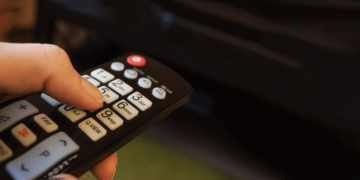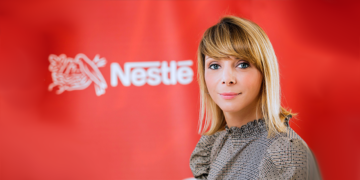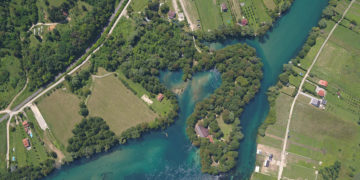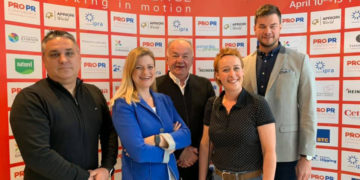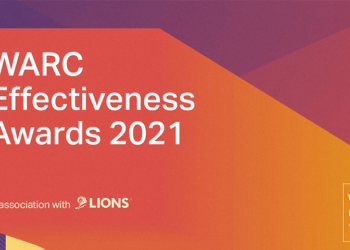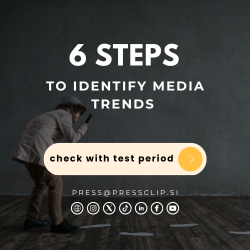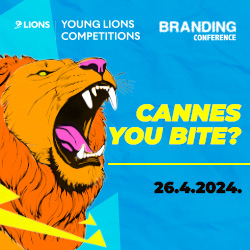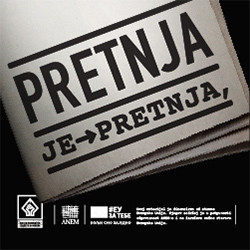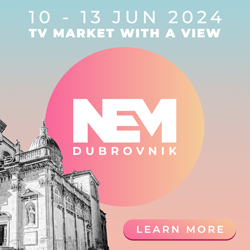Drugi jezik na kojem je dostupan ovaj članak: Bosnian
By: James Harris, Chief Digital Officer – Global Clients, Dentsu Aegis Network
Whilst the future direction of programmatic is open to much uncertainty and debate at present, what is absolutely clear is that programmatic is no longer just a thing, its now increasingly part of everything we do.
Despite the many challenges it faces, not least the so called programmatic experts who clutter your linkedin feeds with utter garbage and jargon day in day out (trust me I am in no shape or form an expert so excused from that pot), The growth and adoption of ‘programmatic’ is set to continue on an upwards trajectory in all major markets.
How programmatic will evolve in that duration is less certain.
Ffor sure it will evolve into something very different from what we see today and I think this will be guided by some key macro trends that I have been observing in recent months and which I believe are crucial to understand and embrace in designing for the next generation, a generation which will hopefully learn from the mistakes made to date.
TREND 1 – THE DIGITAL DRAWBRIDGES ARE PULLED UP
In recent months and weeks, we have witnessed the retreat of the major platforms Google and Facebook back into their walled gardens, pulling up with them their digital drawbridges.
Specifically, restrictions and removal of external partners’ capabilities to connect to and import and export data and audiences in and out Google and Facebook.
Whilst data access restrictions have always been a consideration when partnering with Google and Facebook, this trend has rapidly accelerated in 2018 owing to the now live GDPR legislation in Europe not to mention the high profile news coverage of Facebook’s and Cambridge Analytica’s use of personal data earlier this year.
And as part of this 27th April Google advised its partners that the Doubleclick ID would be placing heavy restrictions on the use of its Doubleclick ID, something which in my view was entirely designed to lift the drawbridge under the claimed premise of helping GDRP, something which I struggle to believe not least as Russia was included in the first wave of ID removal countries.
I believe that this trend will also rapidly fuel a second major trend or direction of travel and that the simplification and reduction in technology platforms and providers within the programmatic landscape.
TREND 2 – SIMPLICITY AND CONSOLIDATION
This pulling up of the digital drawbridges is likely to accelerate the failure rate of standalone ad-tech players in programmatic, especially those dependent on connections with and data from the larger players, and those who do not own their own inventory sources or audience data.
I also expect to see this failure rate further accelerated as advertisers seek sanctuary in digital walled gardens and consolidate their technology platforms and partners around these players, especially those that have their own media properties and inventory at scale too.
Indeed, Terence Kawaja, the creator of the now infamous Lumascape, detailing the complex adtech and programmatic technology landscapes, is on the record as saying that he believes up to 90% of current technology players in this space could vanish through either failure or consolidation into the larger platforms.
While expecting Google to remain a big winner here, as they have the most complete stack at present, on the other hand we also expect to see the large telecommunications providers, led by Verizon, increasingly move into this space.
The expansion of Oath (the recent creation of AOL and Yahoo!) points to this, and other programmatic media players have also been acquired by other telcos recently, most notably the purchase of App Nexus by AT & T this week, pointing towards a key key trend that is already a reality.
Importantly, telcos also own the infrastructure and have correct data permissions from users which means that they are potentially better placed to navigate the growth of mobile and move away from cookie-based data to personal data, deterministic matches and device IDs and deliver serious damage to the now great institutions of Google and Facebook.
I also expect to see Amazon crash the party, and their rich consumer data and deep pockets mean they will be a key partner to engage with in the future evolution of programmatic both in Europe and beyond whether we like it or not.
However whilst it would appear the consultancies like accenture are also crashing the party I would be surprised to see them get any real traction here, not least as they really don’t get media as evidenced by their efforts in this space to date and media is what this is still about.
What this means is that there needs to be a laser focus on consolidation and simplification of programmatic platforms and technology, removing any smaller partners who are dependent on external data and connections to operate whilst also seeking to build a broader set of partnerships with telecommunications providers and Amazon and power marketing with robust device identity and relevant (purchase) data.
TREND 3 – THE DEATH OF THE STANDALONE SUPER DMP
In the last few years the trend has been towards clients adopting external large DMPs (data management platforms) provided by the likes of Krux or Adobe and placing these at the centre of their digital and programmatic advertising efforts.
However, with the major platforms now raising their digital drawbridges, scared by data privacy and GDPR regulation, a large amount of the fuel for these giant platforms is now at risk of completely vanishing, meaning that their importance in the programmatic strategy of large advertisers is rapidly diminished.
Alongside this we are also observing that many clients are rapidly recognising that the reality of these platforms is very different from the sales pitch; without clear use cases and measures of ROI, the DMP can easily become problematic.
For me the implication is clear: I expect to see a decline in the focus on these platforms and their general usage across the next three years, plus a decline in their usage to manage and deliver programmatic audiences.
The market will, we believe, see a consolidation with failure of the smaller providers and platforms and a focus on using solutions provided by the larger players, again Amazon and Google stand out as two strong partnership bets here, although Oracle and Adobe are likely to maintain a share too.
Additionally, I expect to see the focus of DMPs shift heavily to the use of first party and CRM data which in turn will have a major impact on the current third party data market and providers, again simplifying and consolidating this landscape as the push for quality compliant audiences and data becomes the focus of DMP deployment.
Again I expect to see Google and Amazon benefit from this trend with more advertisers migrating to their respective platforms to access their rich audience data and targeting capabilities which will no longer available through 3rd party DMPs and data providers.
Again i think the implications here are clear – advertisers must carefully analyse the use cases for a full scale external DMP and understand what data they can and cannot obtain.
One serious option is to consider a virtual DMP approach – using existing partnerships and ad-tech to deliver the same outputs or use cases but without the central external DMP cost component and technology.
TREND 4 – BE SAFE, BE SEEN, BE NOTICED
For me the next major trend that will shape the future direction further beyond the data areas will will be a continued and growing focus by programmatic advertisers on delivering higher levels of brand safety, coupled with higher levels of attention and different ways of measuring this, and we believe this will manifest itself in three distinct ways:
Firstly we will see a continued decline in the use of traditional RTB (real time bidding) and open ad exchanges,plus a converse acceleration in the use of private marketplaces (PMP’s) or guaranteed trading models.
Open marketplaces and RTB have been the staple of programmatic media since its inception. However, for the first time in 2017 we saw their share shrink in favour of Private Market Place or Programmatic direct trading.
Alongside this I expect to see more advertisers starting to question the assumed wisdom of maximising reach through programmatic and the deployment of Byron Sharp-type approaches where programmatic is used to reduce cost and replace broadcast medium in the pursuit of cheaper audience-only reach. In short this akin to still believing that the earth is flat, but I will save that for a future article or book.
Finally, as part of this change I also expect to see a continued focus on finding better measurement models to replace the current out of date approach of using reach and click through as a measure of success which are frankly a disaster and not fit for purpose, and in fact never were.
For advertisers this means the following, need to focus on working with major players to establish programmatic access to their premium brand safe inventory around the use of PMP and guaranteed trading mechanisms and a complete removal of open exchange and RTB as for me the evidence is now clearly available that that this brings with it inherent risks around brand safety and attention that cannot be removed by technology or machines, just ask Google!
It will also need new measures to illustrate the value of this move to more expensive but better quality programmatic using PMP and guaranteed trading models something which I don’t yet have all the answers for.
TREND 5 – PROGRAMMATIC FOR ALL
Quite simply this is the observation that more and more media channels are becoming subject to programmatic approaches, both in terms of applying data to their targeting and delivering, whilst automating their trading and buying executions.
This expansion is already impacting into the worlds of television and digital out of home, where the ability to deliver spot on programmatic is now becoming a reality and even what would have been seen as the last bastions of old media such as cinema and print, are currently testing and experimenting in using programmatic trading and delivery techniques.
CONCLUSION
So whilst nobody can predict the future with absolute certainty, I have certainly have a go here, and I genuinely believe that these 5 macro trends will be highly significant in shaping the future programmatic landscape both in Europe and beyond in the coming months and years.
The market is very dynamic at the moment especially with high impact regulations like GDPR coming into play meaning nothing is set in stone however what I can predict with absolute certainty is that programmatic is no longer a thing, it is in now in everything.

